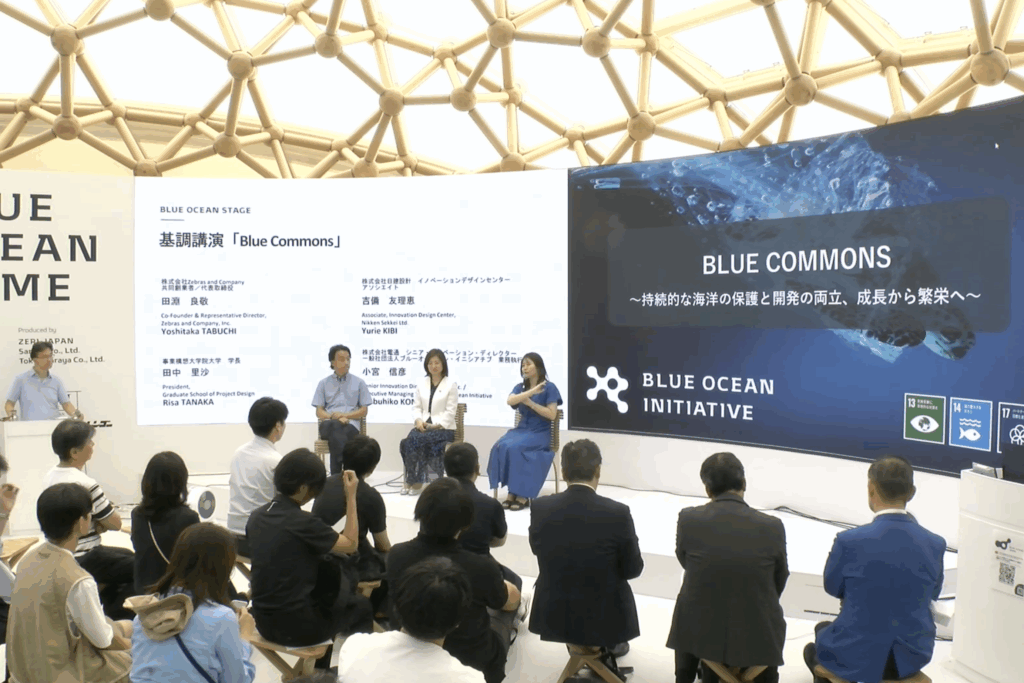
“BLUE CHALLENGE 2025” was held from Monday, September 15th to Sunday, September 21st. Companies supporting BLUE OCEAN DOME discussed a wide range of topics, from marine plastic recovery and fisheries resource management to promoting blue carbon, tourism creation, and next-generation education. They introduced the cutting edge of resource recycling and sustainability to protect a sustainable and bountiful ocean from a variety of perspectives.
Blue Commons
On the first day, a keynote speech and corporate presentations were held, titled “Blue Commons.” Keynote speakers included Yoshitaka Tabuchi of Zebras and Company, Risa Tanaka of the Graduate School of Project Design, and Yurie Kibi of Nikken Sekkei Ltd. Treating the challenges each organization faces as shared assets, or commons, participants discussed their approaches to balancing public interest and business viability from the perspectives of a zebra company, an educational institution tasked with business creation, and a construction company promoting urban development.

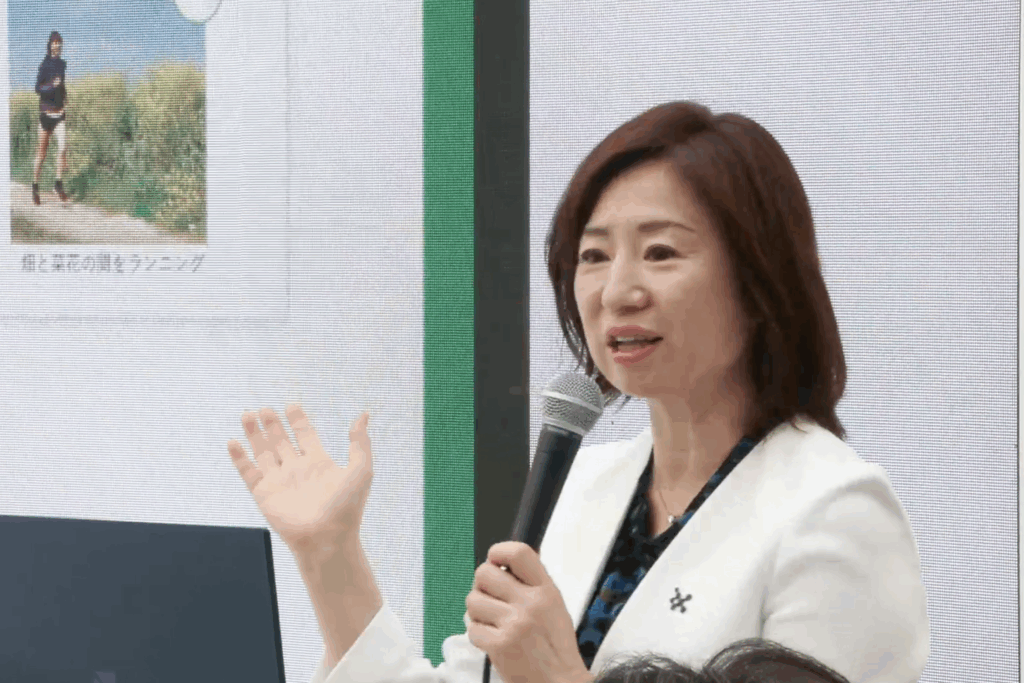
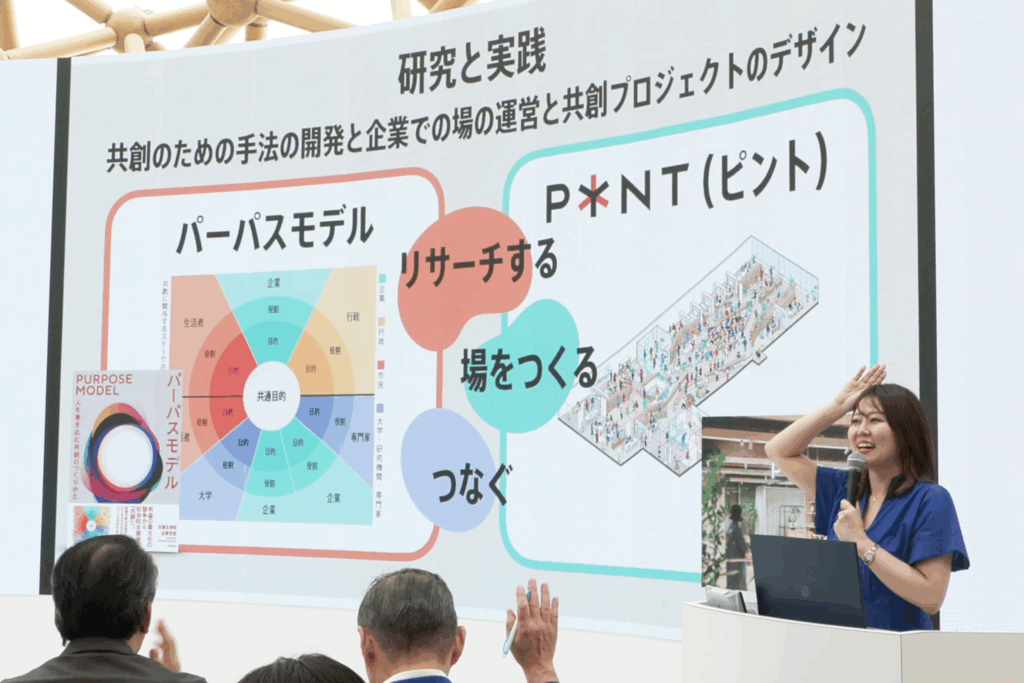
In addition, corporate presentations were given by Taku Furuta of Rengo Co., Ltd., Moritaka Nomura of Daiwa House Industry Co., Ltd., and Yoshihiko Hirata of Saraya Co., Ltd., who share their respective initiatives as companies closely connected with BLUE OCEAN DOME. Furuta and Hirata, who were involved in the construction of the pavilion, focused on interior and exterior materials and construction techniques. Furthermore, Hirata introduced environmentally friendly products and initiatives, expressing his hope that the experience at BLUE OCEAN DOME will inspire participants to think about the future of our oceans.
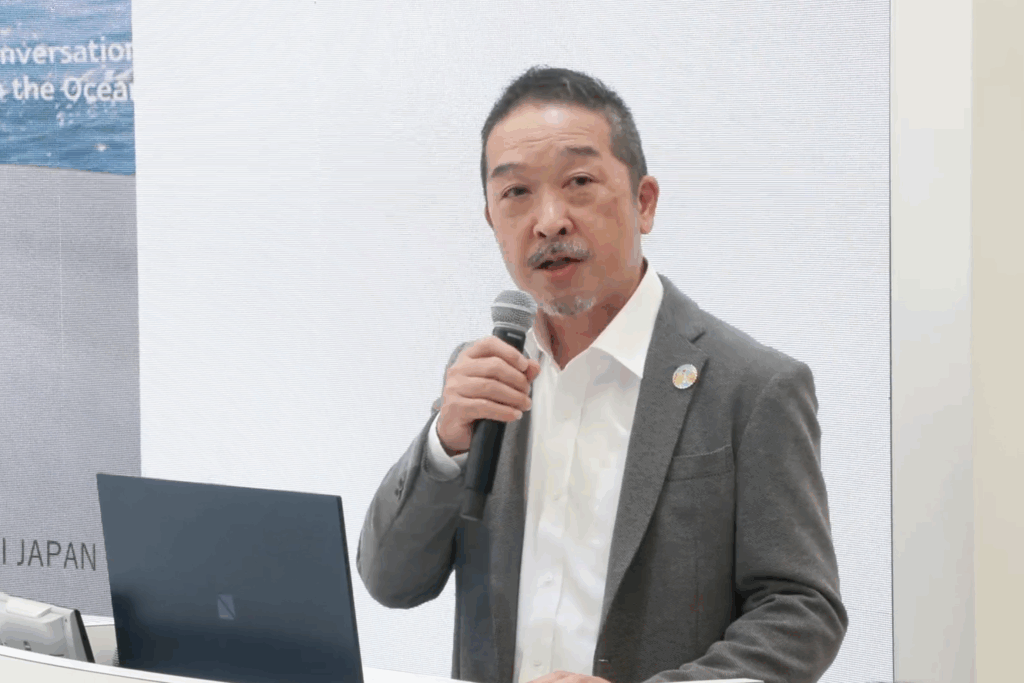
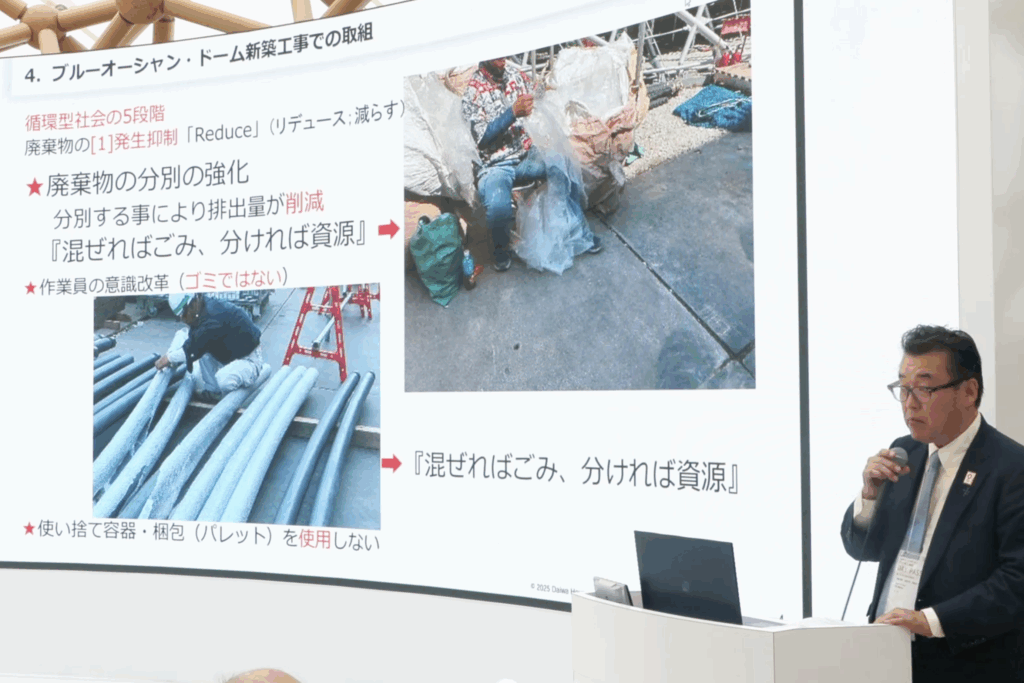
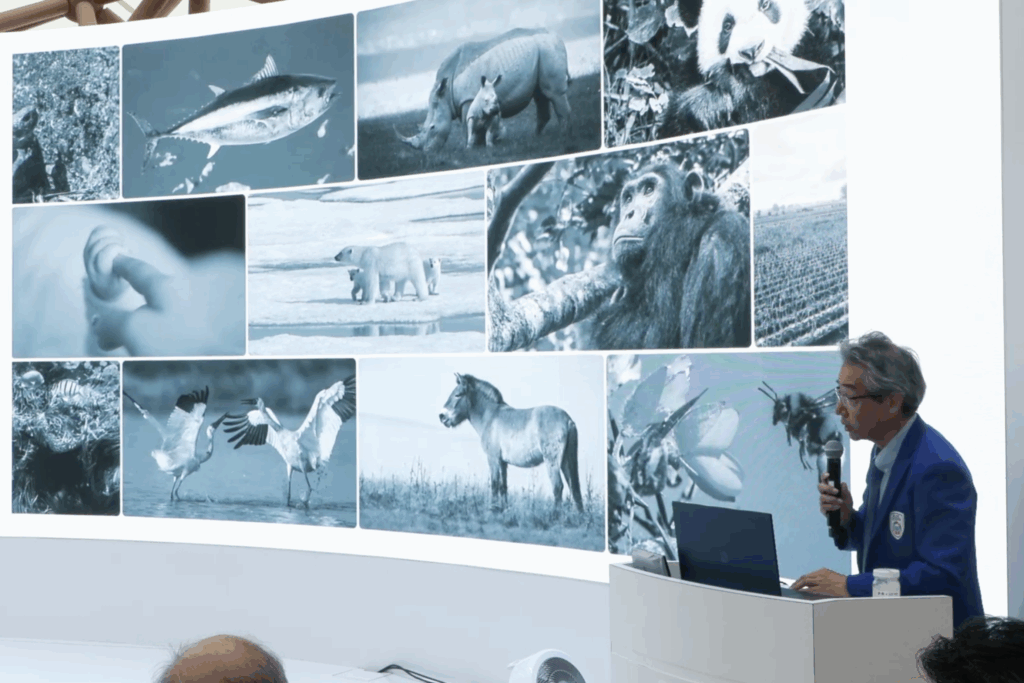
Accelerating the Collection and Recycling of Marine Plastic
On the second day, the theme of “marine plastic waste” was brought together representatives from industry, government, academia, and business to share the current situation and paths to solutions.
In the keynote session, Hirotaka Sakamoto of Tsuneishi Kamtex Corporation, Yukiko Koyama of Saga Prefecture’s Policy Department, and Hisashi Suzuki of Otani University took the stage. They presented the current state of plastic waste washing up on Japan’s coasts, explained the current state of treatment and recycling, and proposed community-based solutions.

In the following sessions, various companies introduced their respective initiatives. First, Yasushi Matsuda of Daifuku Co., Ltd. and Takayuki Murakoshi of Pirika Co., Ltd. presented AI-equipped automated collection robots and technology for visualizing waste distribution, and discussed the possibility of achieving zero additional marine plastic waste by 2050. Yusuke Usui of Yamaha Motor Co., Ltd. and Masayuki Terai of Gomi no Gakkou Co., Ltd. introduced beach cleaning equipment they had developed. Finally, Hisao Shintani of Saraya Co., Ltd. and Hisako Yoshino of TerraCycle Japan explained the product development of a hand sanitizer dispenser incorporating cutting-edge technologies from the fields of public health and IoT.
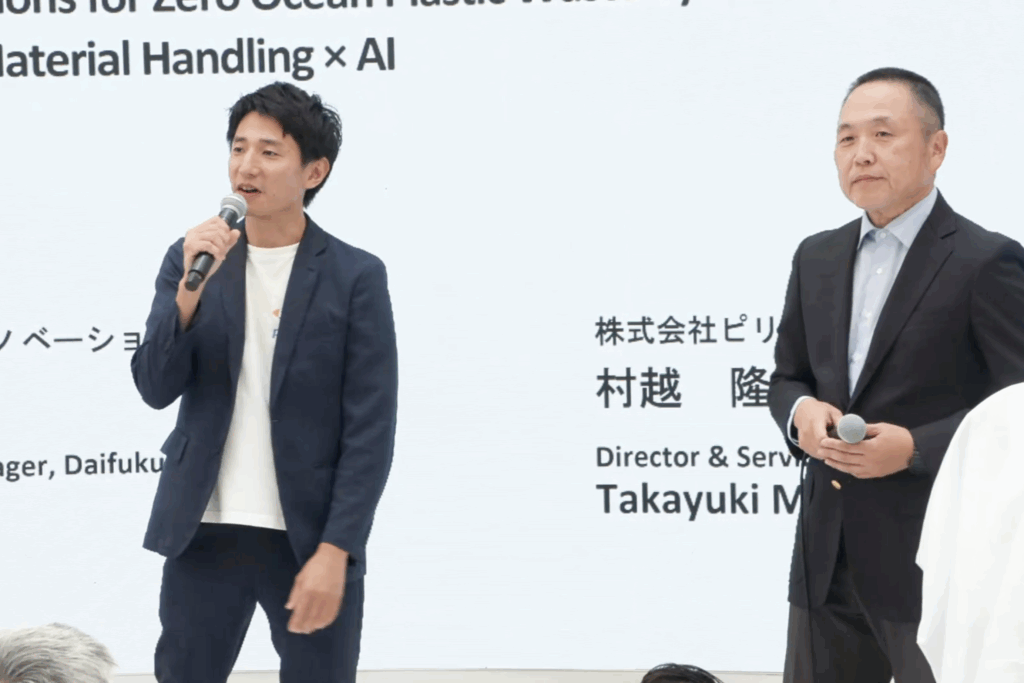
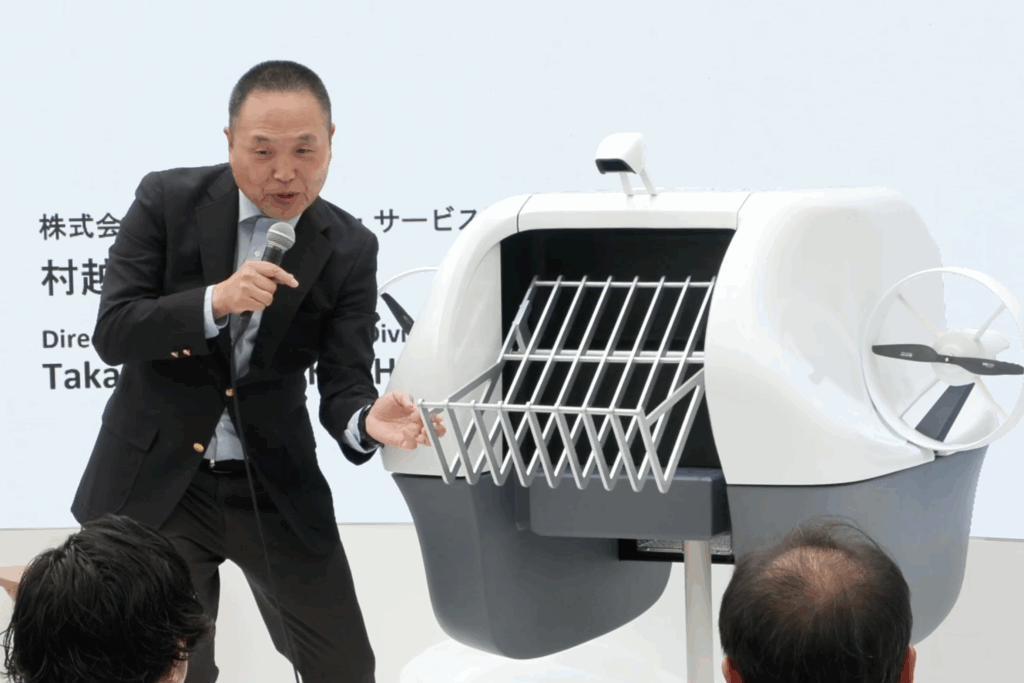
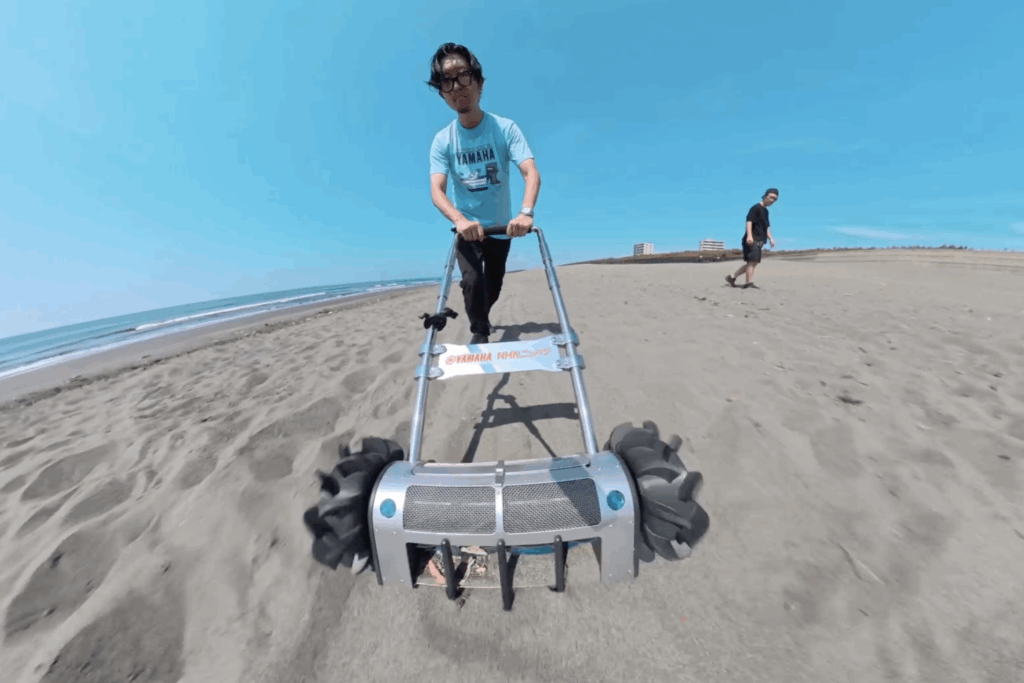

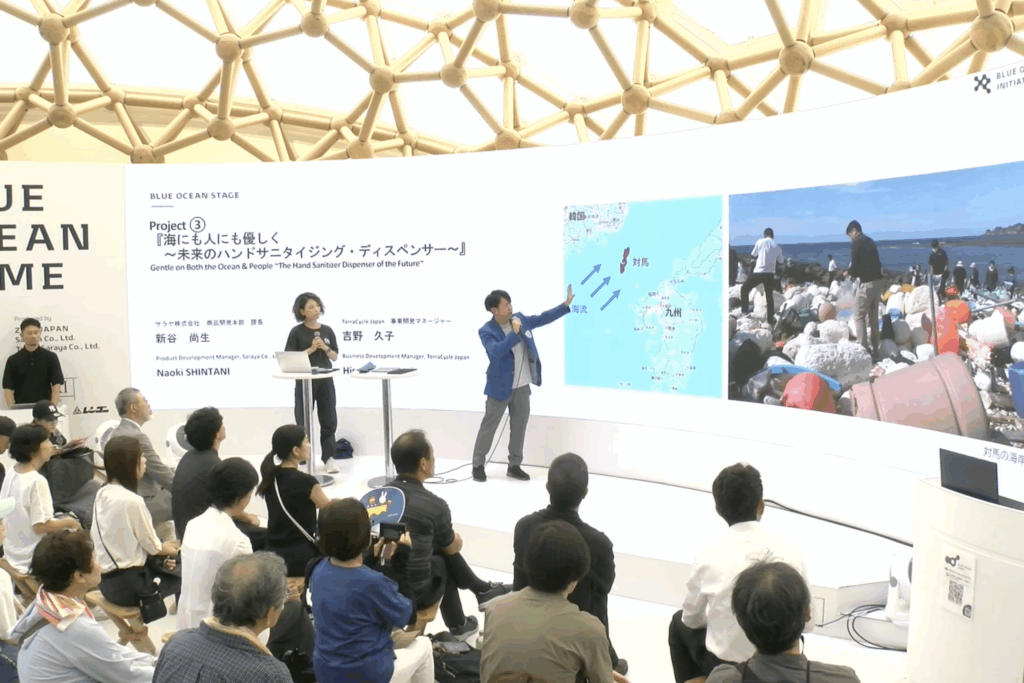
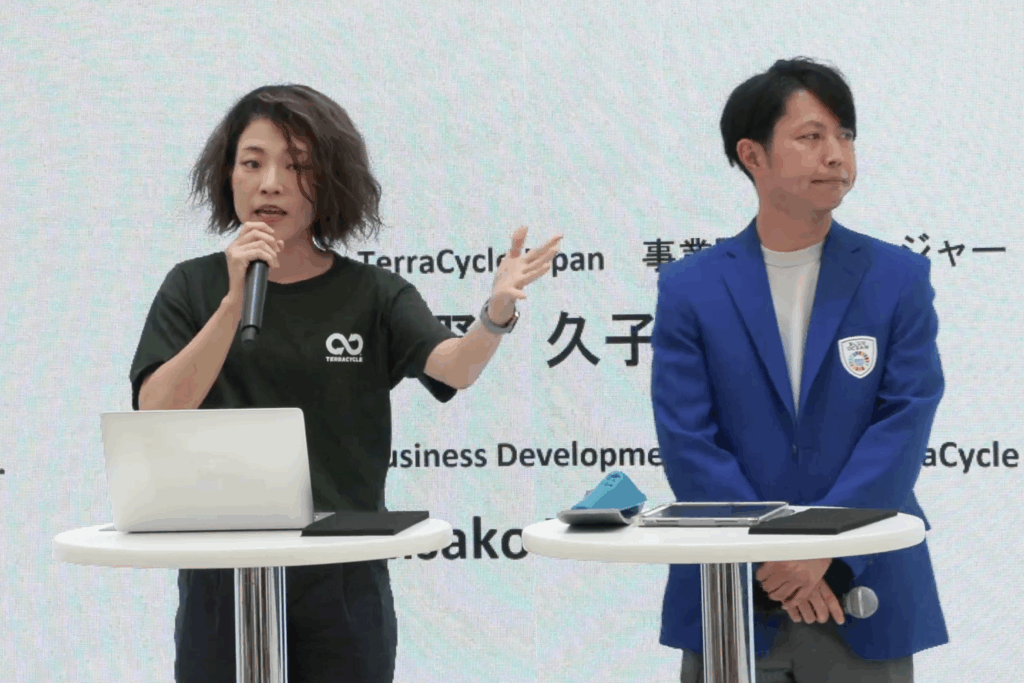
The closing session featured Hiroshi Kanefusa of TOPPAN Corporation, Mitsukuni Hayashi of buoy Corporation, and Akane Hida of ASKUL Corporation. They shared specific examples of marine plastic collection and recycling, and discussed future solutions for a sustainable ocean.
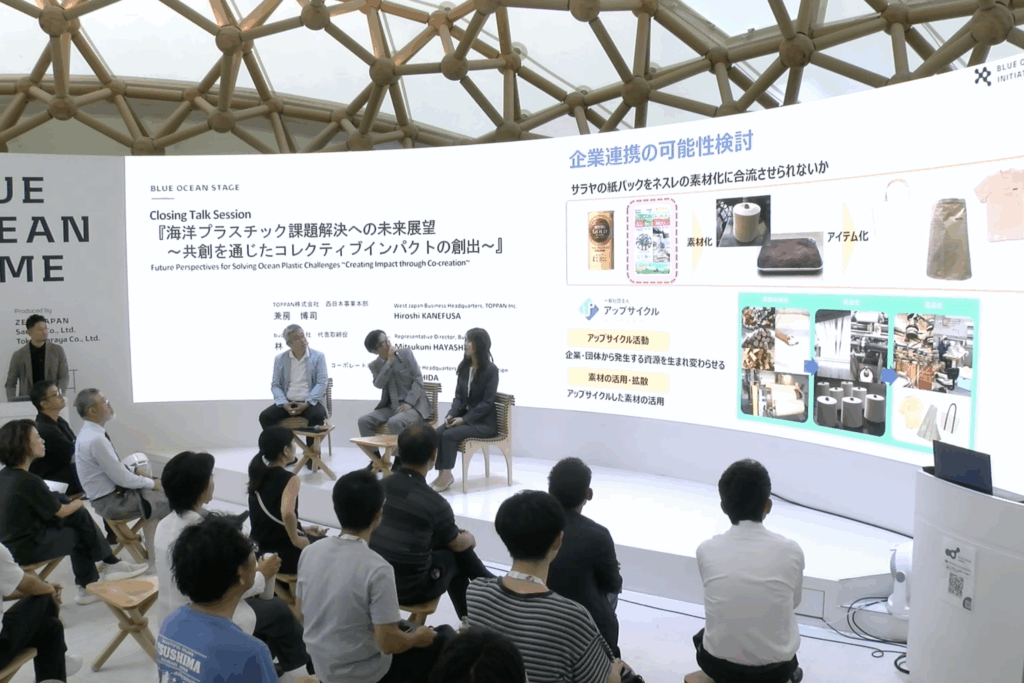
Fisheries Resource Management and the Evolution of Supply Chains
On the third day, under the theme of “Fisheries Resource Management and the Evolution of Supply Chains,” Shuhei Uematsu of WWF Japan’s IUU Fishing Countermeasures spoke about the importance of scientific resource management and traceability amid the depletion of fisheries resources and the growing damage caused by illegal, unreported, and unregulated (IUU) fishing.

In the following session, Masanori Sano and Shota Mochizuki of ABeam Consulting Ltd., Yuki Tsuda of Fisherman Japan Marketing, Inc., and Chikara Takahashi of Marukan Takahashi Suisan Co., Ltd. presented specific measures for sustainable fishing, such as promoting awareness of certification labels.
He also announced that a system is being developed to clarify the provenance of fish from capture to consumption through a pilot project, urging participants to “select and support properly caught fish as a first step toward changing the future.”
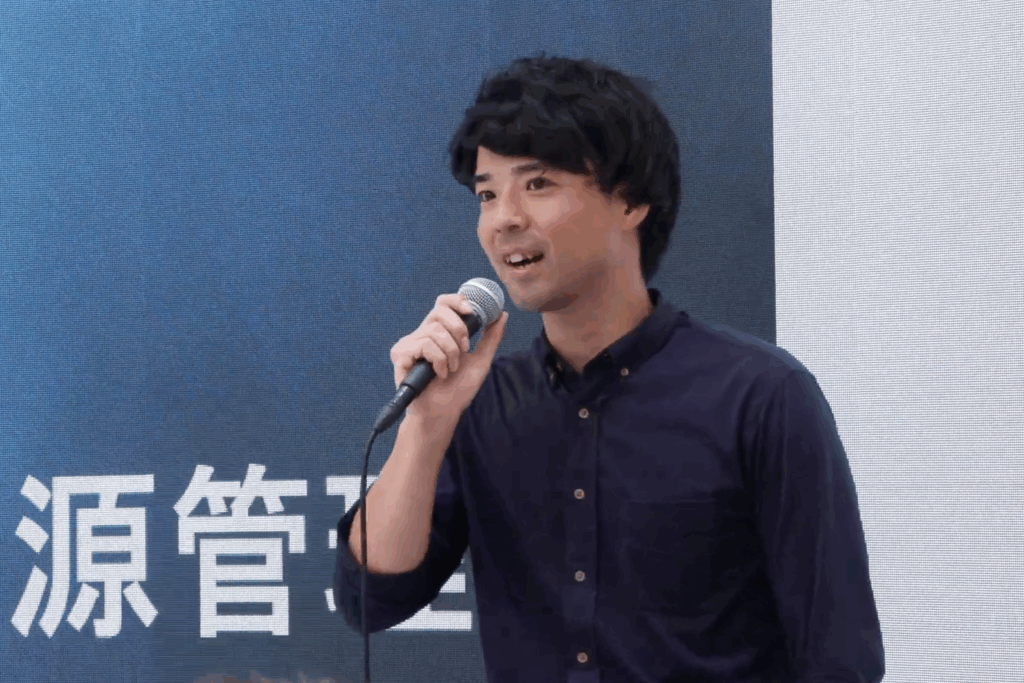

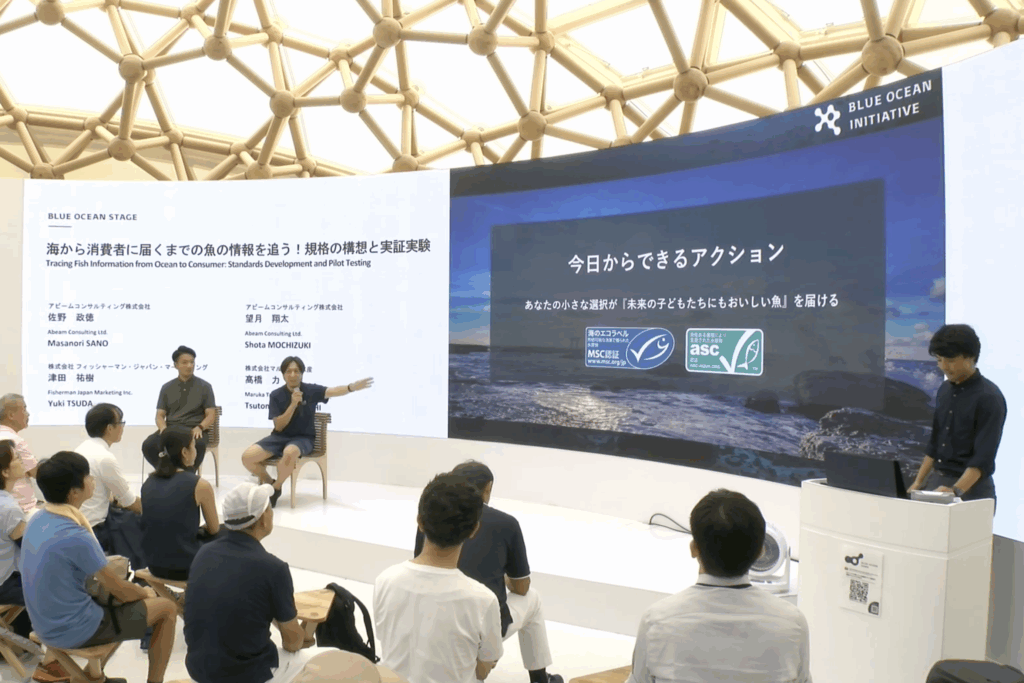
In the final session, Ryota Kihara of Saraya Co., Ltd., Yuki Tsuda of Fisherman Japan Marketing, Inc., and Masahiro Shimizu of COTS COTS LTD took the stage. They introduced resource conservation systems that utilize freezing technology to safely deliver fish from production sites to consumers, challenges in cold supply chains in Africa, and examples of building a fish-eating culture. They also discussed future efforts to expand into Japan.
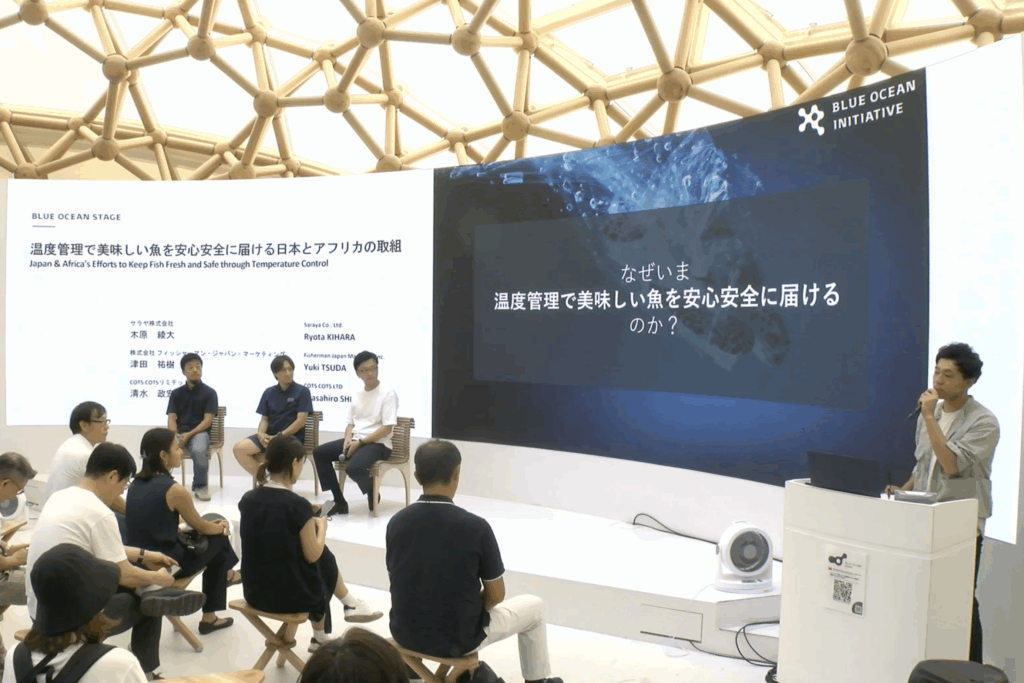
Promoting Blue Carbon and Creating an Industry
On the fourth day, various initiatives to protect the oceans were presented under the theme of “Promoting Blue Carbon and Creating an Industry.”
Taking to the stage under the theme of “Creating and Nurturing Seaweed Beds,” speakers included Keiko Ito of WMI Inc., Kaori Yoshida of Rengo Co., Ltd., Shigefumi Hisatsune of Sumitomo Osaka Cement Co., Ltd., Kyo Endo of Allsum LLC, Hisamichi Tayama of Marine Hapitat Iki General Incorporated Association, Yuichiro Tamura of Penta-Ocean Construction Co., Ltd., Aki Miyagi of Aquasound Inc., and Shiki Takeuchi of Inoka Inc. They spoke about examples of seaweed restoration activities being carried out in their respective fields, taking into account the current state of coastal denudation and marine challenges.

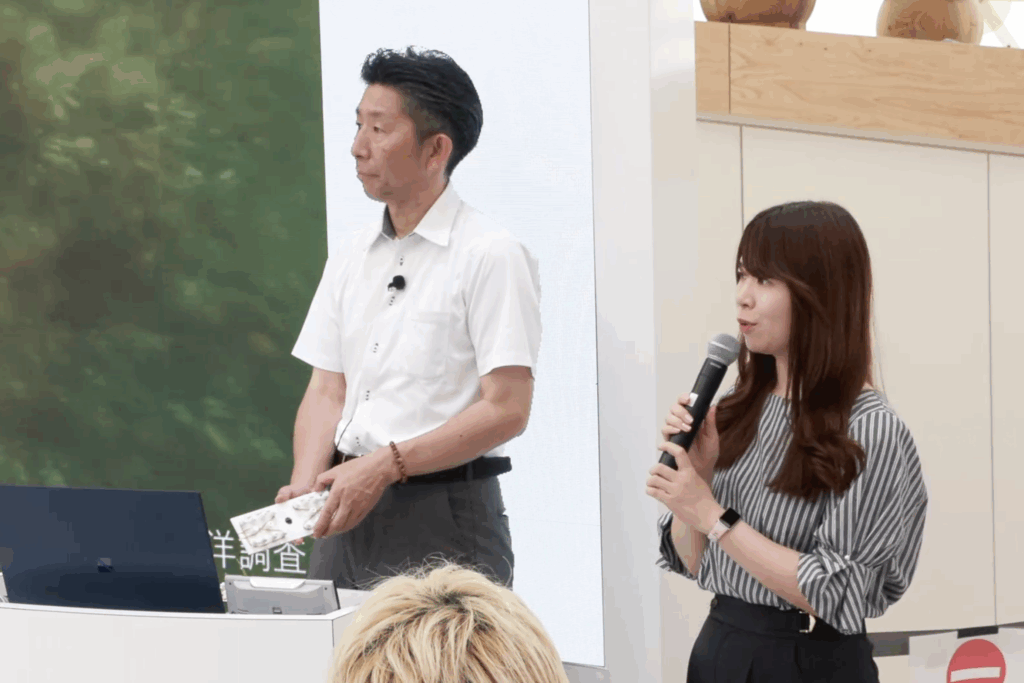

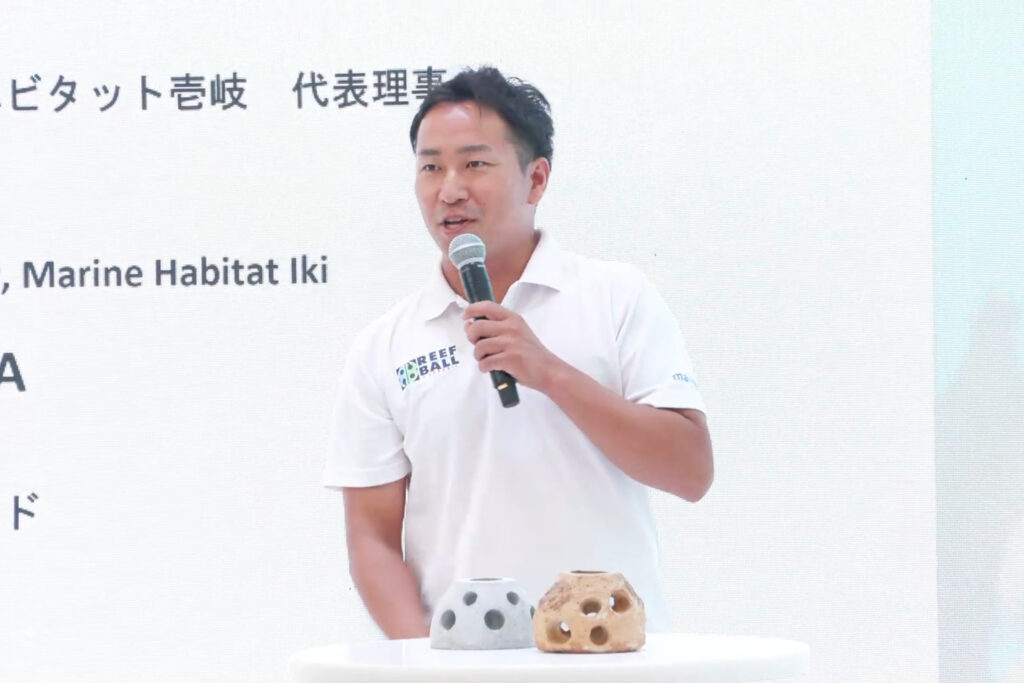
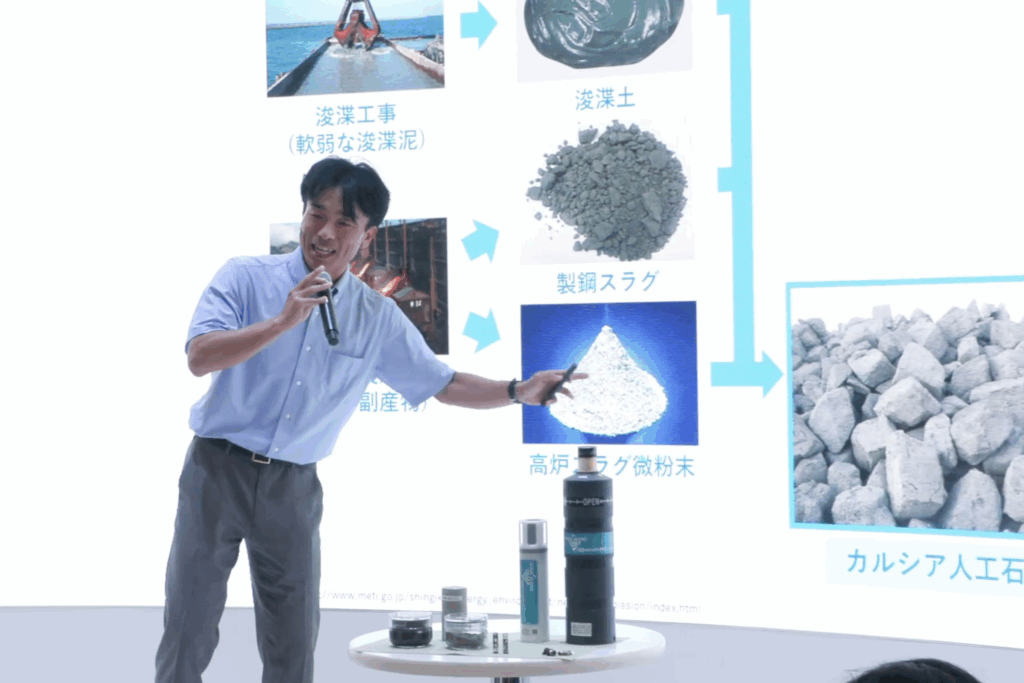
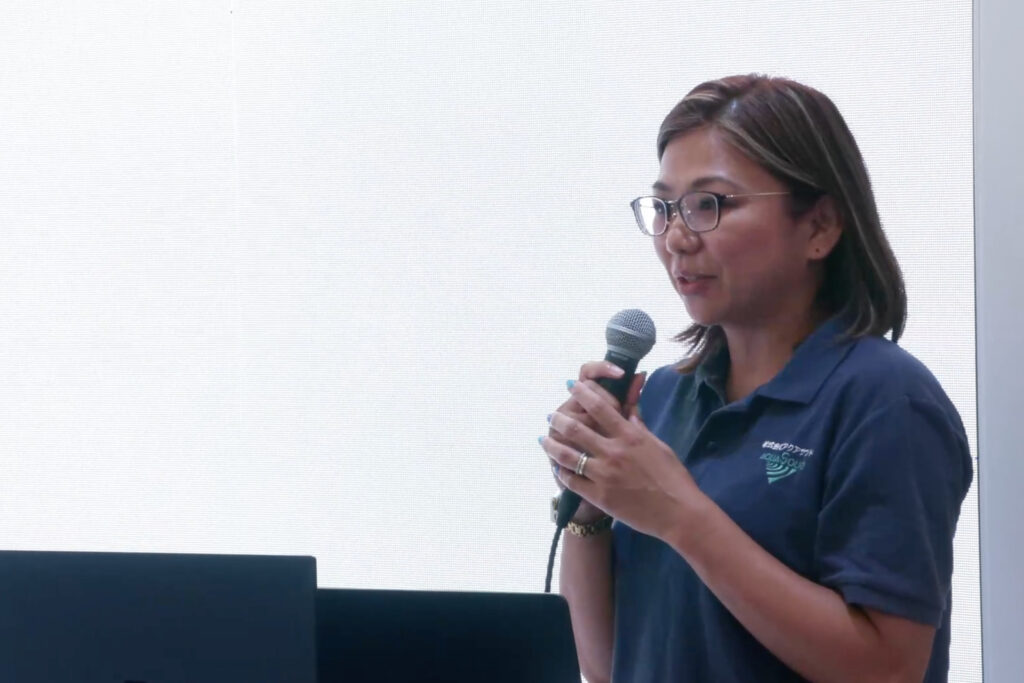
Furthermore, Takeuchi, Hisatsune, Tayama, and Tamura held a talk session in which they discussed the significance of continuing seaweed restoration activities and the potential for expansion by linking individual efforts.
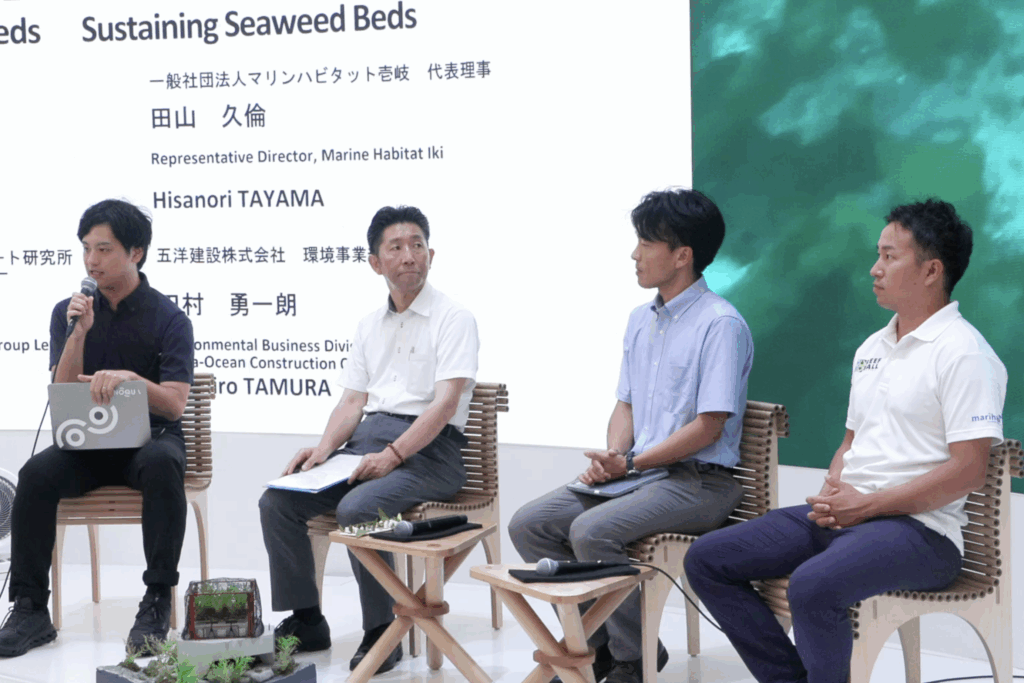
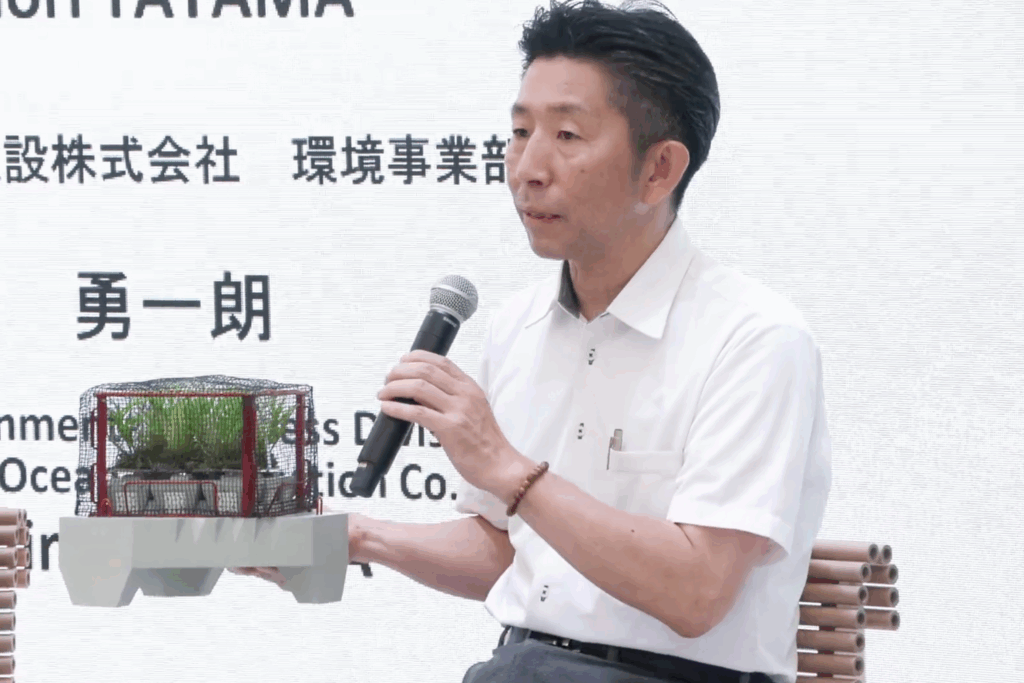

Creating New Businesses and Regional Revitalization for “Sea Tourism”
On Day 5, during the “Creating New Businesses and Regional Revitalization for Sea Tourism” session, three speakers, including Tayama, who spoke on Day 4, along with Kobayashi Teruhoshi of buoy Inc. and Moriya Yui of III Three Inc., introduced businesses addressing regional and environmental issues. They demonstrated how young people working in fishing and non-fishing industries are also making diverse efforts to sustain the ocean’s abundance.
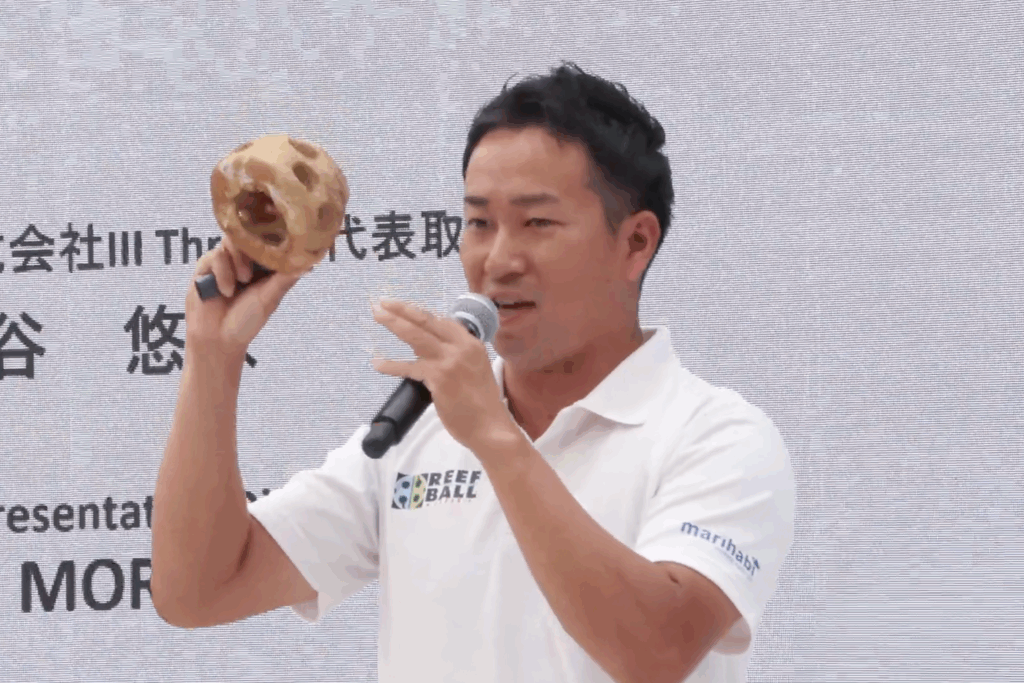

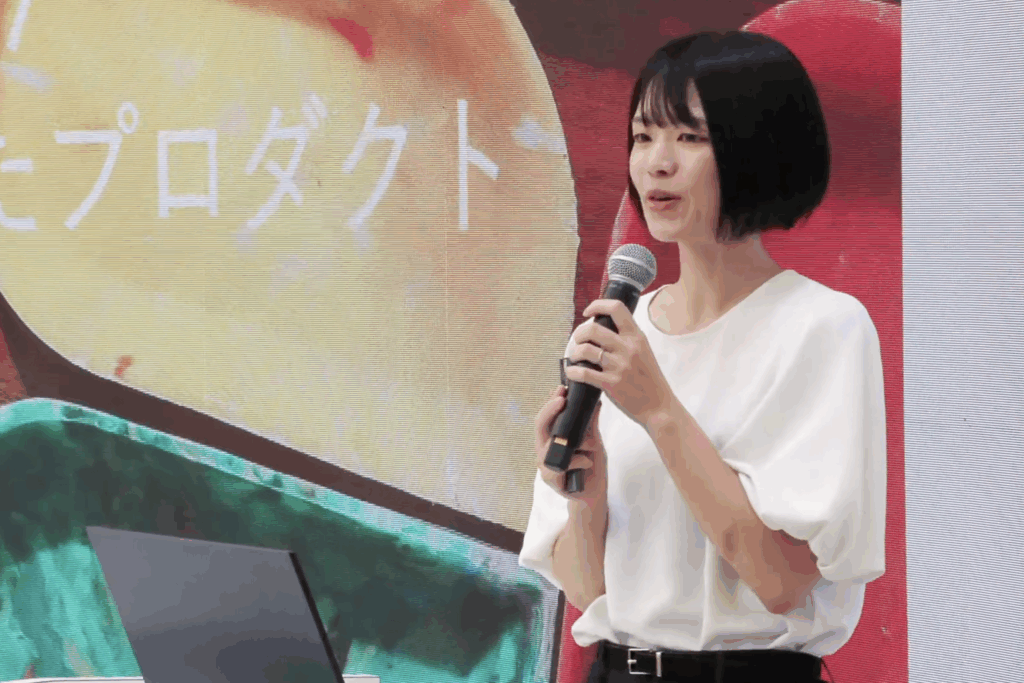

Next, Osamu Suzuki of Fisherman Japan, Koji Katanozaka of dots Inc., and Eisuke Nakamura of the Fisheries Promotion Division of the Fisheries and Oceans Bureau, Department of Economy, Trade and Industry, Shizuoka Prefecture, explained the “Marine Industry Matching Service” platform. They explained its structure and the concept of “marine industry,” and shared case studies from Ajiro Fishing Port (Atami City), Nishina Fishing Port (Nishiizu Town), and Yaizu Fishing Port (Yaizu City). They continued to focus on matching fishermen with private companies, aiming to build a sustainable business model, and demonstrating their proactive approach to expanding their activities.
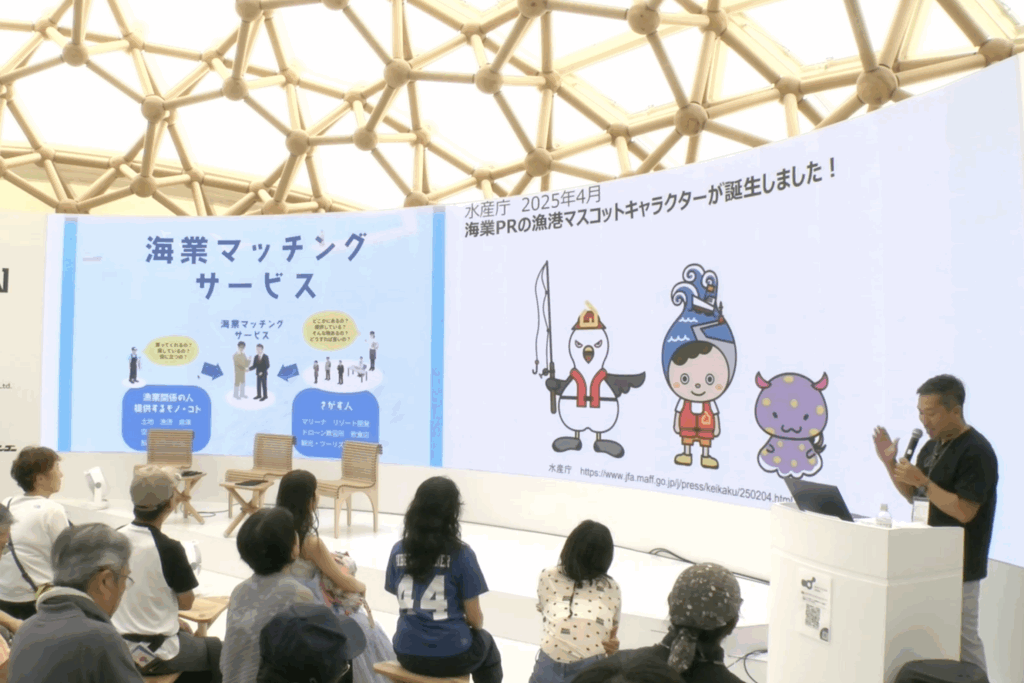
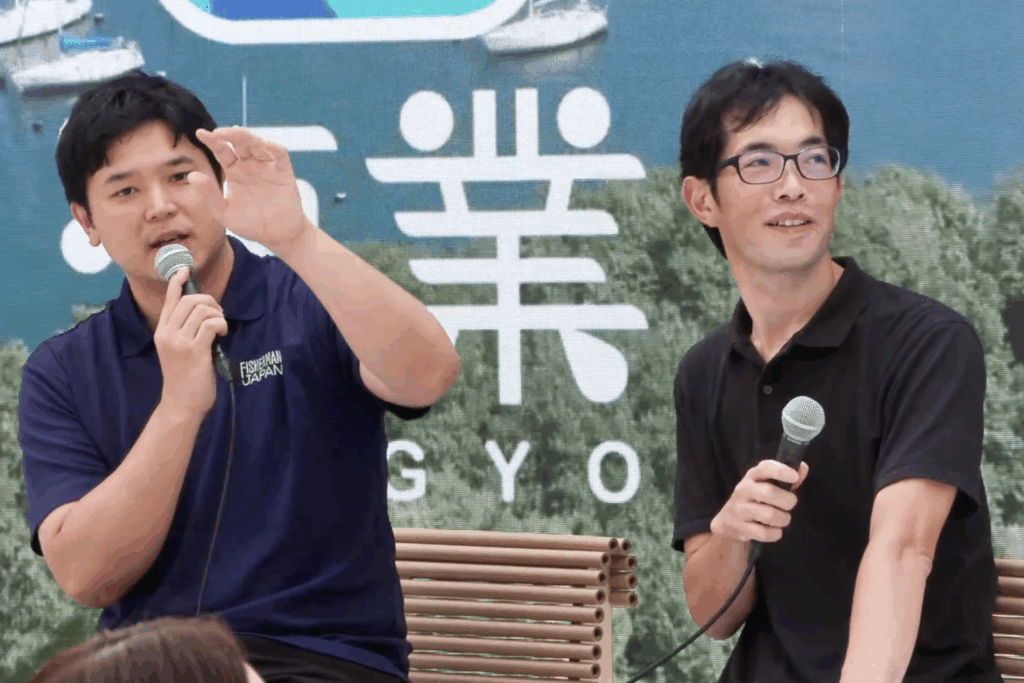
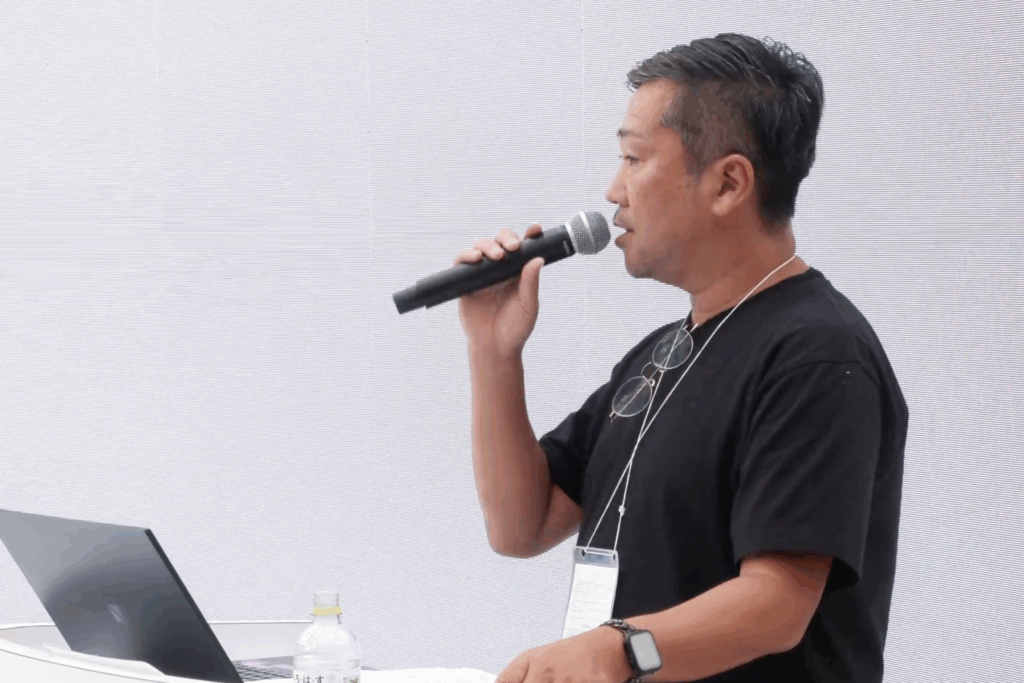
Yuki Tsuda of Fisherman Japan and Akihiro Taisai of the Sustainability Center, a general incorporated association, spoke about the current major issue of biodiversity loss. They introduced the concept of “nature positive,” which aims to halt biodiversity loss, put it on a recovery track, and ensure a thriving natural environment. They emphasized this as an essential perspective for future regional revitalization.

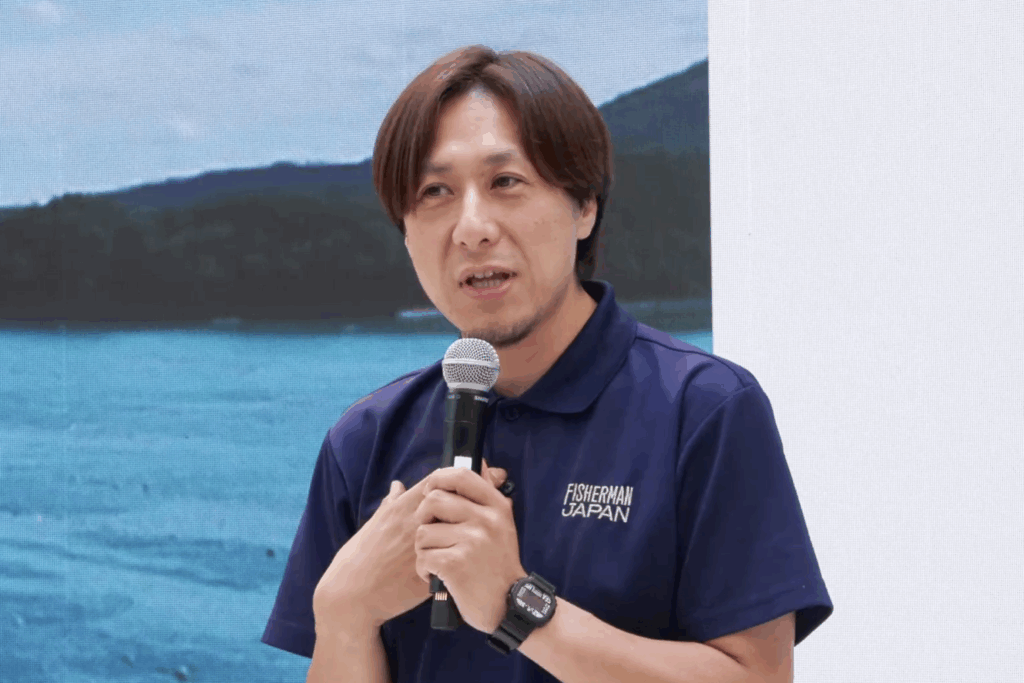
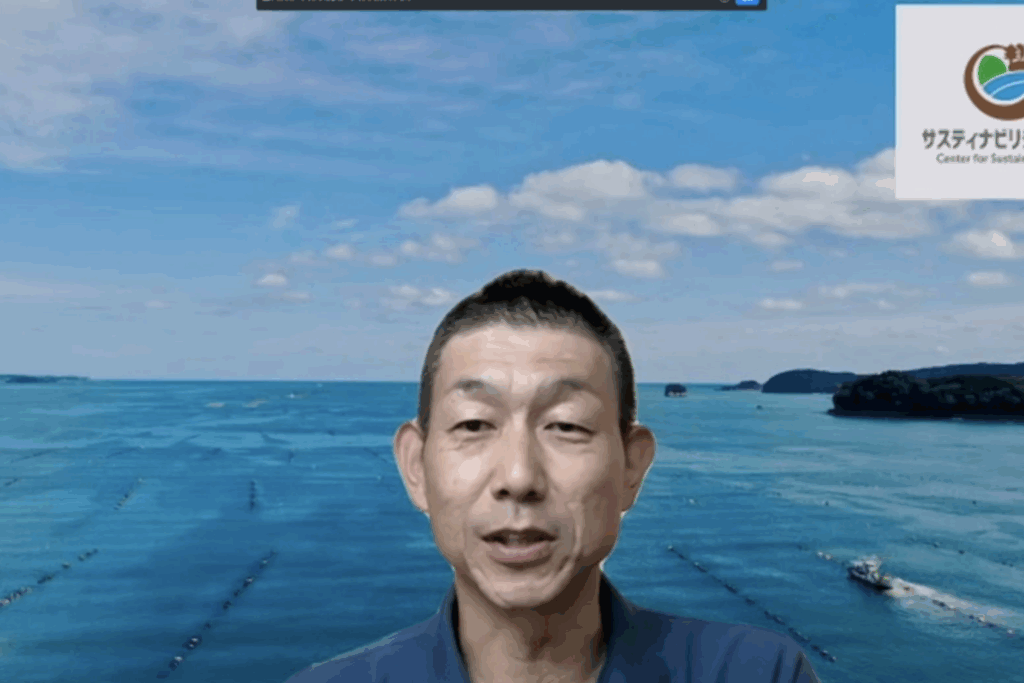
Communication to Accelerate Marine Conservation
On the final day, speakers introduced new initiatives to connect marine issues with society, under the theme of “Communication to Accelerate Marine Conservation.”
Ryuhei Oishi of Harch Co., Ltd., under the slogan “Let’s Smile with the Ocean,” emphasized the importance of not only communicating the seriousness of the current situation but also positively increasing the number of people involved. He introduced projects such as “ThankBlue,” which promotes gratitude, and “UMI-EMA,” which uses recycled marine plastic as a material. Yuki Hayata and Nagisa Masuda of REMARE Co., Ltd. are responsible for the creation of UMI-EMA and will explain the process leading up to its completion.
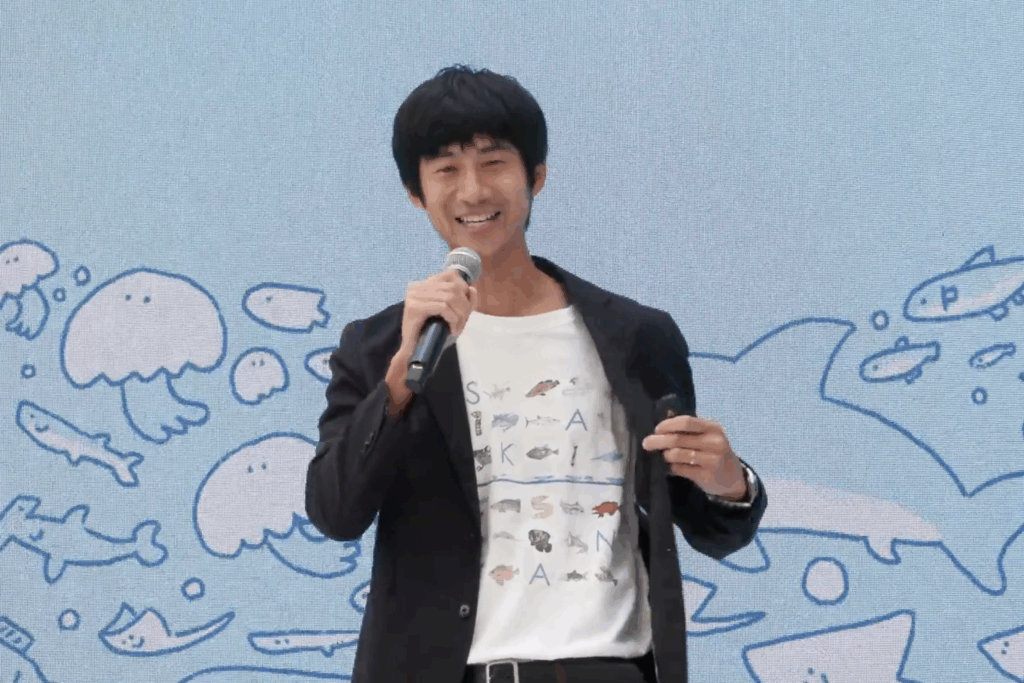
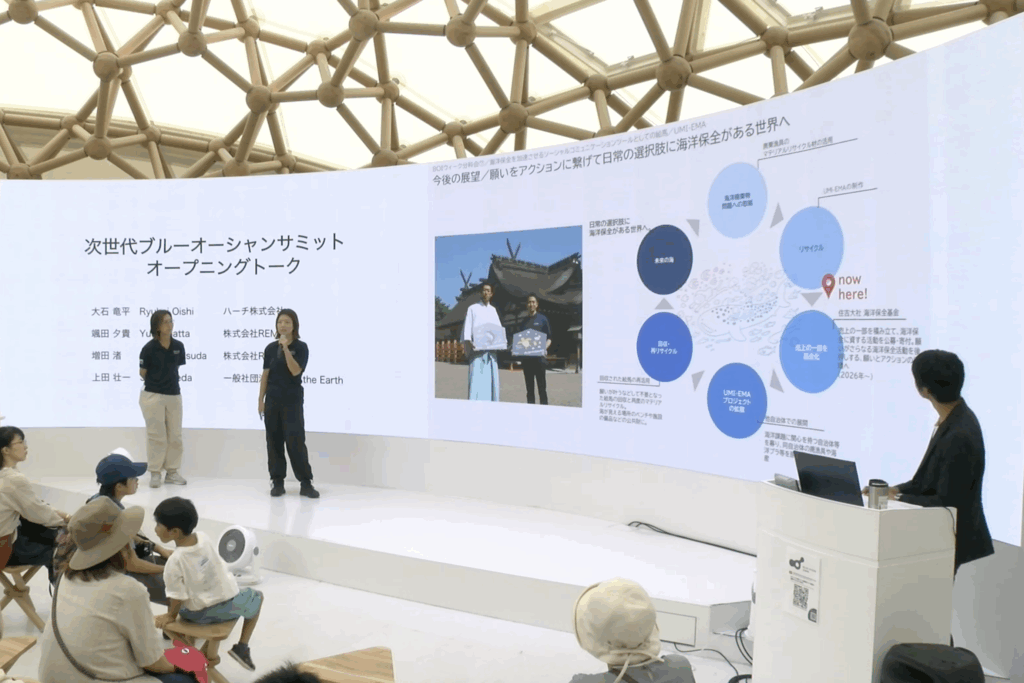
In addition, Soichi Ueda of Think the Earth General Incorporated Association took the stage to host the “Next Generation Blue Ocean Summit,” where elementary, junior high, and high school students from across Japan presented the results of their inquiry-based learning. Seven schools from across Japan participated in the summit: St. Dominic’s Gakuen Elementary School, Karatsu City Nagoya Elementary School, Nishiasaaki Junior High School in Yokkaichi City, Mie Prefecture / Onahama Kaisei High School, Fukushima Prefecture, Tokyo Metropolitan Oizumi High School Junior High School, Saga Prefectural Karatsu Nishi High School, and Waseda Saga High School.
To conclude the event, Junko Kogure, Oishi, and Ueda from Felix Partners Inc. reflected on the event and expressed their hope that the children’s free thinking and enthusiasm will be a powerful force in protecting the oceans of the future.

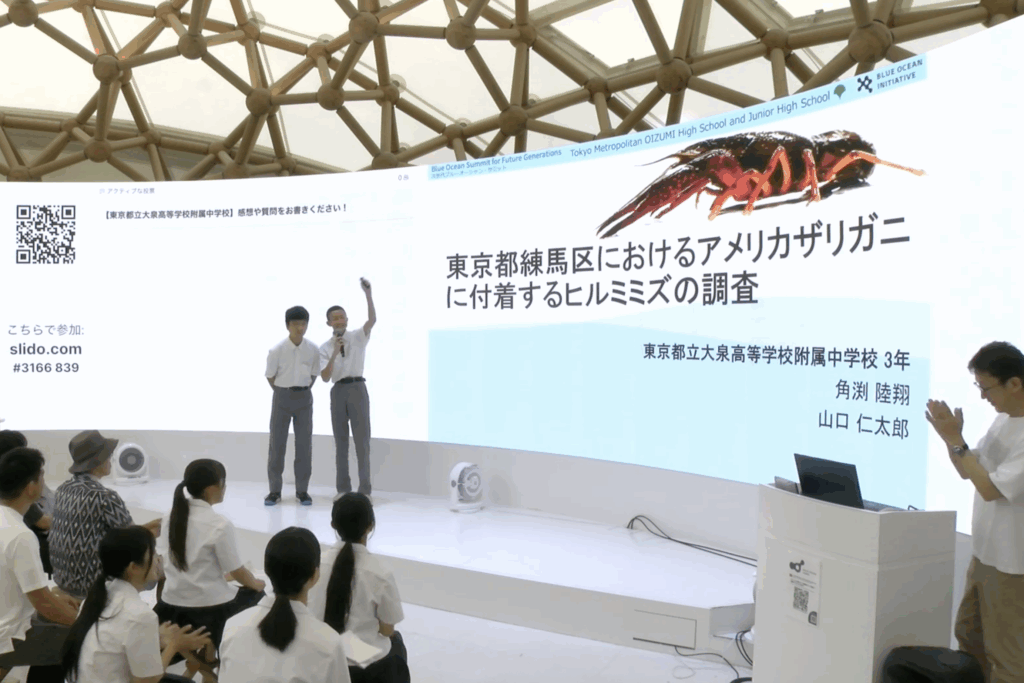


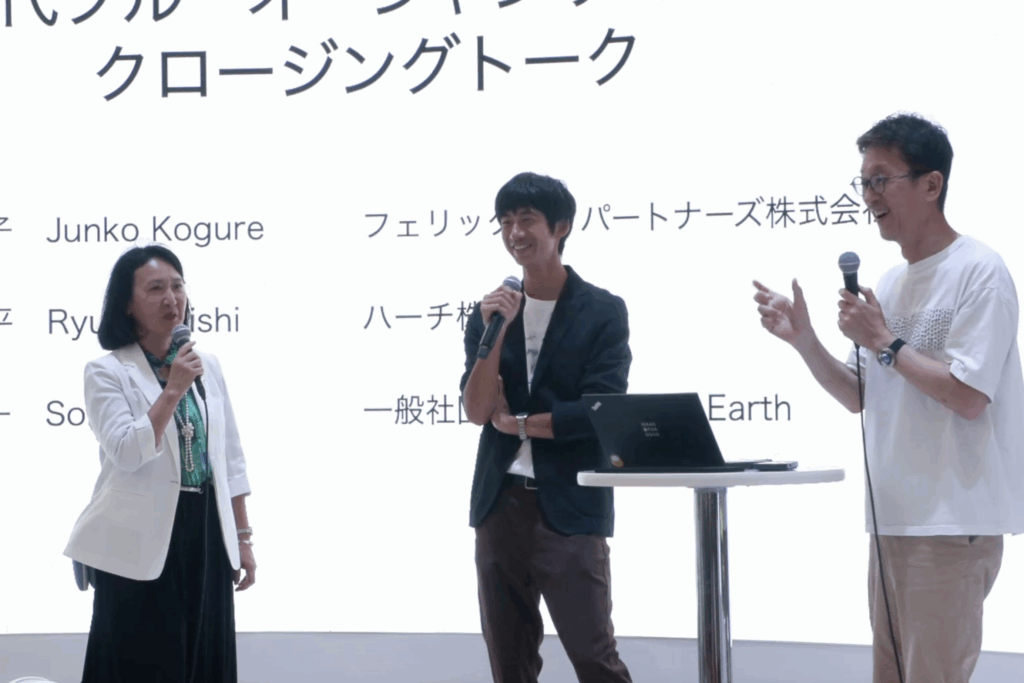
▼The event is available to watch on the official BLUE OCEAN DOME YouTube channel. Please take a look.
【#119】Blue Commons (ZERI JAPAN/Blue Ocean Initiative) #EXPO2025
【#120】Accelerating Marine Plastic Recovery and Recycling (ZERI JAPAN/Blue Ocean Initiative) #EXPO2025
【#123】Evolution of Fisheries Resource Management and Supply Chains (ZERI JAPAN/Blue Ocean Initiative) #EXPO2025
【#124】Promoting Blue Carbon and Creating New Industries (ZERI JAPAN/Blue Ocean Initiative) #EXPO2025
【#125】Creating New Businesses and Regional Revitalization Through “Sea Tourism” (ZERI JAPAN/Blue Ocean Initiative) #EXPO2025
【#127】Communication to Accelerate Marine Conservation (ZERI JAPAN/Blue Ocean Initiative) #EXPO2025